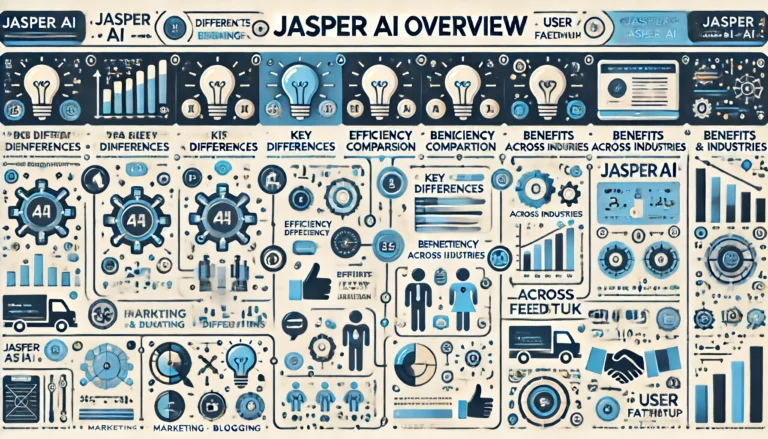Best Content Trendshttps://www.fiverr.com/resources/guides/digital-marketing/content-marketing-trends
Table of Contents
How to Identify the Best Content Trends
In today’s fast-paced digital landscape, staying ahead of content trends is not merely beneficial; it is essential for any digital marketer, blogger, or business striving to maintain relevance and competitiveness. The ability to spot emerging trends can significantly enhance your engagement, drive traffic, and ultimately boost your brand’s visibility. But how exactly can you identify these golden trends that have the potential to skyrocket your success? Let’s dive into some detailed, practical steps and tools that can guide you in the right direction.
1. Utilize Social Media Listening Tools
Social media platforms are hotbeds of trending content and conversations. Tools like Hootsuite, Sprout Social, and Brandwatch enable you to monitor what people are talking about in real-time. By setting up alerts and tracking specific keywords or hashtags related to your industry, you can quickly identify emerging trends. Pay attention to viral posts, trending hashtags, and popular discussions within your niche. Social media listening helps you stay in tune with your audience’s interests and the broader conversation landscape.
2. Leverage Google Trends
Google Trends is an invaluable resource for identifying popular search queries and tracking their popularity over time. By entering relevant keywords into Google Trends, you can see how interest in these terms has changed and identify when a topic is gaining momentum. The tool also allows you to compare multiple terms, providing insights into which topics are currently trending. Additionally, Google Trends can help you spot seasonal trends, allowing you to plan your content calendar accordingly.
3. Analyse Competitor Content
Keeping an eye on your competitors can provide valuable insights into successful content trends. Tools like BuzzSumo and SEMrush enable you to analyse the most shared and linked-to content from your competitors. By understanding what works well for them, you can identify patterns and topics that resonate with your target audience. Look for high-performing content in terms of shares, likes, and comments, and consider how you can adapt these ideas for your own content strategy.
.
Understanding Your Audience
Firstly, understanding your audience is the cornerstone of effective trend identification. Without a deep comprehension of who your audience is, what they care about, and how they behave, any efforts to spot and capitalize on trends will be misguided. Here’s how you can delve into understanding your audience in greater detail:
Leverage Analytics Tools
Utilizing analytics tools is a fundamental step in gaining insights into your audience’s preferences and behaviours. Platforms such as Google Analytics, social media insights, and other specialized tools provide a wealth of data that can help you understand what topics and types of content resonate most with your audience. These tools offer a variety of metrics including page views, time spent on page, bounce rates, and engagement rates.
Google Analytics: This powerful tool allows you to track various aspects of your website traffic. By examining metrics like page views, you can determine which content is attracting the most attention. Analysing the time spent on each page can reveal which topics are keeping your audience engaged. Additionally, bounce rates can indicate whether your content is relevant and engaging enough to keep visitors from leaving your site quickly.
Social Media Insights: Platforms like Facebook, Twitter, Instagram, and LinkedIn offer detailed insights into how your content is performing. You can track likes, shares, comments, and overall engagement rates. Understanding which posts generate the most interaction can help you identify content trends and preferences among your followers.
Observe Shifts in Interests and Behaviours
Monitoring shifts in your audience’s interests and behaviours is crucial for staying ahead of trends. Regularly review the performance data from your analytics tools to identify any emerging patterns. For instance, if you notice a sudden increase in engagement with a particular type of content or topic, it might indicate a growing interest that you can capitalize on.
Trend Analysis: Look for trends over different periods—daily, weekly, monthly, and yearly. This will help you spot both short-term spikes in interest and longer-term changes in behaviour. For example, if you see a consistent rise in engagement with video content over several months, it might be time to invest more in creating video content.
Feedback and Interaction: Pay attention to direct feedback from your audience through comments, emails, and social media interactions. This feedback can provide qualitative insights that complement the quantitative data from analytics tools. Understanding the reasons behind your audience’s preferences can help you create more targeted and effective content.
Segment Your Audience
To tailor your content effectively, segment your audience based on different criteria such as demographics, geographic location, interests, and behaviour. Different segments may have varying preferences and identifying these can help you deliver more personalized content.
Demographic Data: Use analytics tools to gather demographic information such as age, gender, and location. This data can help you understand which segments of your audience are most engaged with your content and which topics resonate with different demographics.
Behavioural Segmentation: Analyse how different segments interact with your content. For example, new visitors might engage with introductory content, while returning visitors might prefer more in-depth articles or updates on specific topics. Tailoring your content strategy to cater to these different segments can enhance engagement and loyalty.
Utilize Surveys and Polls
Directly engaging with your audience through surveys and polls can provide valuable insights into their interests and preferences. Tools like SurveyMonkey and Type form allow you to create surveys that can be distributed via email, social media, or your website.
Surveys: Design surveys to ask your audience about their favourite types of content, the topics they are most interested in, and what they would like to see more of in the future. Make sure to ask open-ended questions to gather detailed feedback.
Polls: Use social media platforms to conduct quick polls on specific topics. Polls are an excellent way to get immediate feedback on content ideas and trends. For instance, you can ask your followers which type of content they prefer—articles, videos, infographics, etc.

Analyse Competitor Audiences
Understanding your audience also involves analysing your competitors’ audiences. Tools like BuzzSumo and SEMrush allow you to see which content is performing well for your competitors. By understanding what resonates with their audiences, you can gain insights into broader industry trends and identify gaps or opportunities for your own content.
Competitor Analysis: Regularly monitor the content strategies of your competitors. Look at the topics they cover, the formats they use, and the engagement levels they achieve. This analysis can help you understand what works well in your industry and how you can differentiate your content to meet the needs of your audience better.
Keep Up with Industry News and Trends
Staying updated with the latest industry news and trends is crucial for understanding your audience. Subscribing to industry newsletters, blogs, and attending webinars or conferences can provide insights into emerging trends and audience interests.
Industry Newsletters and Blogs: Regularly read publications that are relevant to your industry. These sources often highlight new trends, technologies, and shifts in audience behaviour that can inform your content strategy.
Webinars and Conferences: Participate in industry events to learn from experts and network with peers. These events are excellent opportunities to gather insights and understand what’s driving interest and engagement in your industry.
In conclusion, understanding your audience is a multifaceted process that involves leveraging analytics tools, observing shifts in interests and behaviours, segmenting your audience, utilizing surveys and polls, analysing competitor audiences, and keeping up with industry news and trends. By gaining a comprehensive understanding of your audience, you can identify the best content trends and tailor your strategy to meet their needs, ultimately driving engagement and achieving your business goals.
Leveraging Industry Tools
Next, leverage industry tools designed for trend tracking. Tools like Shineranker are invaluable for identifying emerging keywords and topics within your niche. By staying updated with real-time data, you can quickly adapt your content strategy to include these trending topics, ensuring your content remains fresh and relevant.
Social Media Monitoring
Social media platforms are a goldmine for trend discovery. Tools like Twitter Trends and BuzzSumo can help you catch the latest waves in your industry before they become mainstream. By integrating these trends into your content early, you position yourself as a thought leader, attracting more viewers and potentially increasing your content’s share ability.
Networking with Professionals
Don’t forget the power of networking with other professionals in your field. Joining forums, attending webinars, and participating in industry conferences can provide insights into what your peers are focusing on. These interactions can offer a broader view of where your industry’s content is heading and what trends are on the horizon.
Analysing Competitors
Keep an eye on your competitors. See what’s working for them and consider how you can adapt or improve upon their successful content strategies. Competitive analysis can help you identify not only what’s trending but also opportunities to differentiate your content.
Implementing Content Trends
Ready to see your engagement soar? Integrating the latest content trends into your strategy isn’t just smart; it’s necessary for staying relevant in the fast-paced world of digital marketing. Here’s how you can make these trends work for you, boosting both your content quality and audience interaction.
Tailoring Content to Trends
First, identify which trends resonate most with your target audience. This might involve incorporating interactive elements like polls or live videos, which have been shown to increase user engagement significantly. Adapt these trends creatively to reflect your unique perspective. For example, if short-form video is trending, consider how your brand can use this format to convey a message that still feels true to your identity.
Monitoring Performance
It’s crucial to monitor the performance of your trend-based content. Use analytics to track engagement rates and adjust your strategy accordingly. This data-driven approach ensures that you’re not just following trends, but benefiting from them.
Staying Flexible
Keep your strategy flexible. The digital landscape evolves rapidly, and so should your content. Regularly review and revise your approach to stay ahead of the curve.
Future Outlook
The horizon for voice and language generators looks promising and packed with potential. As we’ve seen, the market is on a steep upward trajectory, with expectations to expand even further in the coming years. This growth is fuelled by continuous advancements in AI and machine learning, making these technologies more sophisticated and accessible across various industries.
Innovations and Trends
11elevenlabs stands at the forefront of this innovation wave. Their commitment to refining and expanding their voice and language solutions could significantly shape how industries integrate these technologies. Looking ahead, we can anticipate that 11elevenlabs will not only enhance their current offerings but also innovate new products that could revolutionize how we interact with machines.

Proactive Adaptation
As these technologies become more embedded in our daily lives, the potential for voice and language generators to become more proactive rather than reactive is immense. Marketers should keep their fingers on the pulse of technological advancements and shifting user preferences to tweak their content strategies accordingly. By doing so, they can ensure that their content remains relevant and engaging, no matter how the trends evolve.
How to Identify the Best Content Trends: What’s Unique
Identifying the best content trends in today’s dynamic digital landscape requires a strategic approach that leverages cutting-edge tools and techniques. What sets this process apart is the integration of advanced analytics, real-time monitoring, and a deep understanding of audience behavior. Here’s a look at what makes identifying the best content trends unique:
1. Advanced Social Media Listening
The use of sophisticated social media listening tools such as Hootsuite, Sprout Social, and Brandwatch is a game-changer. These platforms allow you to monitor real-time conversations, track trending hashtags, and identify viral content across various social media channels. This real-time data helps you stay ahead of the curve by pinpointing emerging trends as they happen, enabling you to create timely and relevant content.
2. Data-Driven Insights with Google Trends
Google Trends offers unique, data-driven insights into popular search queries over time. By analyzing the search volume for specific keywords, you can identify which topics are gaining traction and predict future trends. This tool provides a visual representation of how interest in certain topics evolves, helping you to make informed decisions about your content strategy.
3. Competitor Analysis Tools
Utilizing tools like BuzzSumo and SEMrush to analyze your competitors’ content performance is a unique strategy. These tools allow you to see which content is resonating with your competitors’ audiences, providing insights into what works well within your industry. By understanding the success of your competitors’ content, you can identify gaps and opportunities for your own content strategy.
4. Influencer Insights
Following industry influencers is a unique way to spot trends early. Influencers often set the stage for new trends within their niches. By monitoring their content, engagements, and the topics they discuss, you can gain insights into emerging trends before they become mainstream. Engaging with influencers can also provide direct feedback and collaborative opportunities to stay ahead.
5. Audience Engagement and Feedback
Directly engaging with your audience through surveys, polls, and interactive content can provide unique insights into their preferences and interests. Tools like SurveyMonkey and Typeform make it easy to gather and analyze feedback. Understanding what your audience wants to see more of can help you tailor your content to meet their needs and stay relevant.
6. Content Discovery Platforms
Platforms like Feedly, Flipboard, and Pocket help you curate and discover trending content from various sources. These tools allow you to follow specific topics, publications, and influencers, providing a continuous stream of relevant content ideas. This helps you stay updated with the latest trends and ensures you never miss out on important developments in your field.
7. Search Engine Analytics
Tools like Ahrefs, Moz, and Google Search Console provide in-depth analysis of search engine data. By identifying trending keywords and popular search queries, you can uncover what your audience is searching for and tailor your content accordingly. This approach ensures that your content is aligned with what people are actively looking for, increasing its relevance and reach.
8. Attending Industry Events
Participating in industry conferences, webinars, and workshops is a unique way to stay informed about the latest trends. These events provide opportunities to learn from experts, network with peers, and gain insights into new developments. Being present at these events helps you understand the direction your industry is heading and positions you as a thought leader.
9. Regular Performance Monitoring
Consistently reviewing your content performance using tools like Google Analytics and social media insights is crucial. By analyzing metrics such as engagement rates, page views, and audience demographics, you can identify patterns and trends in what content performs best. This continuous monitoring helps you refine your strategy and adapt to changing trends.
10. Innovation and Experimentation
Finally, a unique aspect of trend identification is the willingness to innovate and experiment. Trying new content formats, exploring emerging platforms, and experimenting with different styles can help you discover what resonates most with your audience. Staying open to change and continuously testing new ideas is key to staying ahead in the ever-evolving digital landscape.
In conclusion, identifying the best content trends involves a combination of advanced tools, data-driven insights, competitor analysis, influencer monitoring, audience engagement, and continuous experimentation. By leveraging these unique strategies, you can stay ahead of the curve and ensure your content remains relevant, engaging, and impactful.

Conclusion
To wrap it up, staying on top of content trends isn’t just beneficial; it’s essential for anyone looking to thrive in the digital marketing space. By being proactive and adaptable, you can ensure that your content remains relevant and compelling, thereby maximizing your engagement and reach. Take the insights and tips shared here and start enhancing your content strategy today.
Call to Action
Ready to dive deeper into the world of AI-driven communication and content trends? Discover how 11elevenlabs is revolutionizing the way we interact with technology. Start today by exploring their innovative solutions and take your content strategy to the next level!
Next Blog :https://rankrisetech.com/the-role-of-11elevenlabs





Pingback: The Ultimate Impact of AI on Business Competitiveness 2024 - Rank Rise Tech